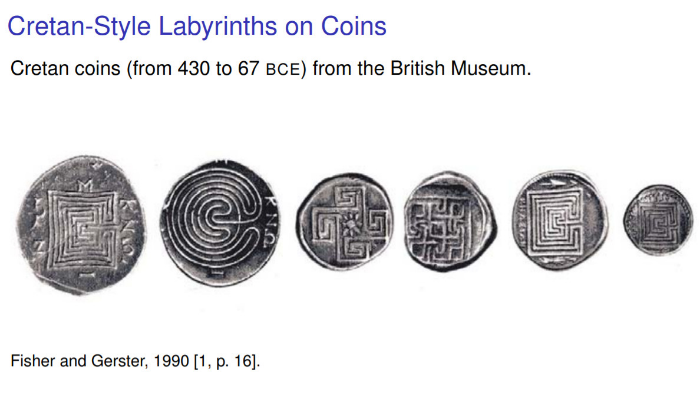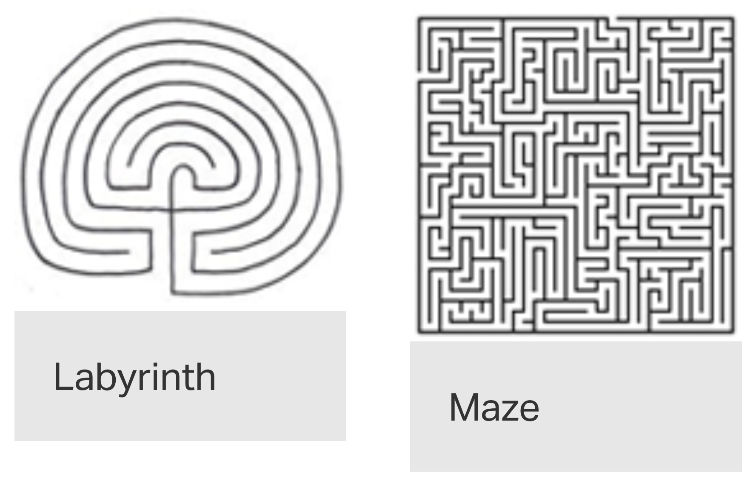Architecture and Mazes
An overview
"A maze allows an objective analysis of process and results. It is a very basic task with simple rules that inherits a considerable challenge for both designers and users" (Berer, 1981).
Mazes are very old and found in many ancient civilisations, they were used as games, puzzles, and mysteries to be solved. They were represented on temples and walls of different religious buildings over time.
Schnabel (2014) explains the symmetry in mazes as they are built on a symmetrical grid framework, single, double, vertical, horizontal, and angled cuboids configure the cube following a principle of architectural hierarchy and structure.

Mazes and technology
As in our book, we are presenting mazes with AR, there are also mazes with VR, as seen by Schnabel (2014), who introduced in his paper mazes in virtual environments. In his study, he compared the first condition was a conventional representation of 3D space with typical 2D architectonic floor plans. The second and third conditions used digital 3D models, within either Desktop-VE (DVE), interactive models displayed on a PC-Monitor, or IVE, with the help of Virtual Reality (VR) - tools and viewed with a Head-Mounted Display (HMD). He examined which differences make 2D- versus 3D environments on the results of a design process. Eighteen pairs of randomly selected architectural students were asked to design 3D mazes within a symmetrical grid defining four fields in each spatial direction in remote collaborative design sessions.
The results of his study were that:
- VE, therefore, offers designers a greater 3D understanding of space and volumes
- Most importantly, the two sets of experiments show that users of VEs do indeed ‘read’ volumes and space better than when working in 2D representations.
- The results also suggest, unfortunately, that IVE tools are still so limited that the characteristics of the systems inhibit their effective use in design tasks.
First task:
From these pictures, what is the difference between a maze and a labyrinth?

References
Schnabel, M.A. T. U. of H. K. (2014). 3D Maze : Creation and Translation of Abstract Architectural Virtual Environments. “Second
Wave” of ICT in Education: From Facilitating Teaching and Learning to En-Gendering Education Reform, June.
https://www.researchgate.net/publication/228591446